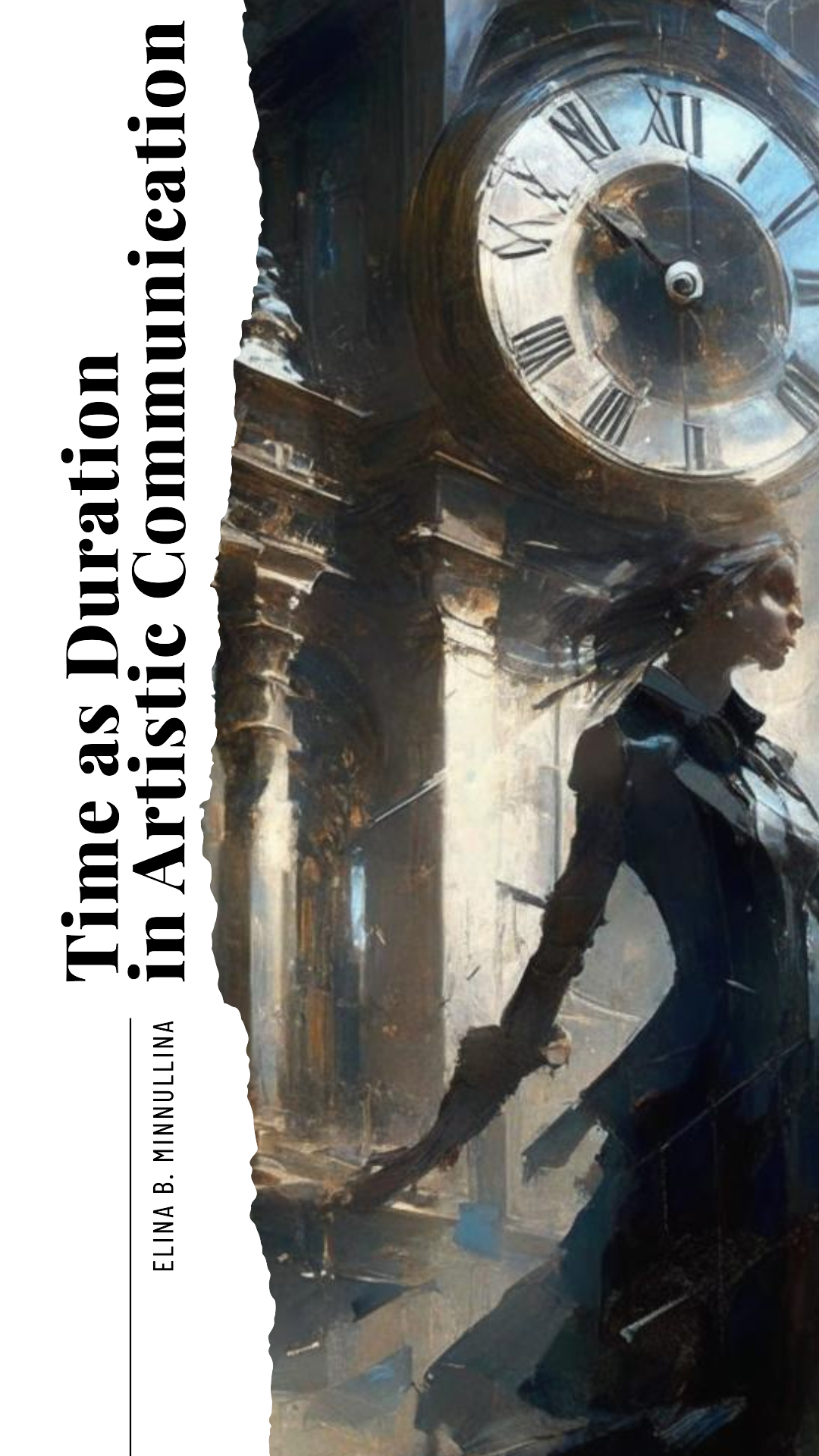Abstract
The article deals with epistemological, aesthetic and communicative aspects of time. The metalanguage of the study is the system of artistic communication. Understanding time as duration, the author uses A. Bergson’s theory of duration which has become relevant in the context of post-non-classical trends in the development of science.
This study is based on a phenomenological analysis of the artistic communication of the twentieth century (avant-garde painting, media art, modern music, photography), and takes into account the concepts of time of G. Deleuze, multiple temporalism of I. Wallerstein and F. Braudel, ideas of E. Husserl and M. Heidegger.
The study showed that in the conditions of the information society, the duration of social interactions changes, diachrony at the communication maximum is compressed into synchrony. Art objects, in which the reception of culture is carried out, display individual and social time, and also convey qualitative transitions and temporal layers through the procedures of duration compression and stretching.
References
Aliev, R. T. (2014). The Motive of Initiation as a Structural Element of the Mythological in the Comics. Theory and Practice of Social Development, 19, 182–185. (In Russian).
Aristotle. (1991). The Complete Works of Aristotle: The Revised Oxford Translation (J. Barnes, Ed.). Princeton University Press.
Barthes, R. (2000). Camera Lucida: Reflections on Photography. Vintage Book. https://doi.org/10.1007/978-1-137-08886-4_6
Bergson, H. (1998). Creative Evolution. Dover Publications.
Bergson, H. (2011). Durée et simultanéité. À propos de la théorie d’Einstein [Duration and simultaneity. About Einstein’s theory]. Edition numérique Pierre Hidalgo. (In French).
Black, D. (2011). Moral Time. Oxford University Press. https://doi.org/10.1093/acprof:oso/9780199737147.001.0001
Braudel, F. (1958). Histoire et Sciences sociales: La longue durée [History and Social Sciences: The long term]. Annales. Histoire, Sciences Sociales, 13(4), 725–753. https://doi.org/10.3406/ahess.1958.2781 (In French)
Deleuze, G. (1969). Logique du Sens [Logic of Meaning]. Les editions de Minuit. (In French).
Di Lernia, D., Serino, S., Pezzulo, G., Pedroli, E., Cipresso, P., & Riva, G. (2018). Feel the Time. Time Perception as a Function of Interoceptive Processing. Frontiers in Human Neuroscience, 12, 74. https://doi.org/10.3389/fnhum.2018.00074
Grice, P. (1989). Studies in the Way of Words. Harvard University Press.
Heidegger, M. (1962). Being and time. Blackwell Publishers Ltd.
Ihde, D. (1996). Technology and the Lifeworld: From Garden to Earth. Indiana University Press.
Karimov, A. R., Minnullina, E. B., & Guryanov, A. S. (2021). The problem of subjective freedom in political communication. Revista EntreLinguas, 7(8). https://doi.org/10.29051/el.v7iesp.8.16352
Luria, A. R. (2003). Fundamentals of neuropsychology. Academy. (In Russian).
Marcuse, H. (1991). One-Dimensional Man: Studies in the Ideology of Advanced Industrial Society. Routledge.
McLuhan, M. (2001). Understanding Media: The Extensions of Man. Routledge.
Minnullina, E. B. (2018). Communicative aspects of social time. Philosophical Thought, 12(12), 1–9. https://doi.org/10.25136/2409-8728.2018.12.28024 (In Russian).
Prigogine, I. (1980). From Being to Becoming: Time and Complexity in the Physical Sciences. Freeman and Company.
Prigogine, I. R., & Stengers, I. (2020). Time. Chaos. Quantum: Towards a solution to the time paradox. Editorial URSS. (In Russian).
Prokofiev, V. N. (1985). On Art and Art Studies: Articles from Various Years. Soviet Artist.. (In Russian).
Sorokin, P. A., & Merton, R. K. (1937). Social Time: A Methodological and Functional Analysis. American Journal of Sociology, 42(5), 615–629. https://doi.org/10.1086/217540
Tajsin, E. A., & Gurianov, A. S. (2021). Interpretation of Sense/Meaning in the Communicative Field. Galactica Media: Journal of Media Studies, 3(4), 206–210. https://doi.org/10.46539/gmd.v3i4.238
Vavilova, Z. (2015). Digital monsters: Representations of humans on the Internet. Sign Systems Studies, 43(2/3), 173–190. https://doi.org/10.12697/SSS.2015.43.2-3.02
Wallerstein, I. (1998). Time and Duration: The Unexcluded Middle, or Reflections on Braudel and Prigogine. Thesis Eleven, 54(1), 79–87. https://doi.org/10.1177/0725513698054000007
Yarskaia-Smirnova, V. N., & Kovalev, M. V. (2017). Temporality of the revolution in the discourse of russian emigration. Vestnik of St Petersburg University. Sociology, 10(3), 269–286. https://doi.org/10.21638/11701/spbu12.2017.302 (In Russian).

This work is licensed under a Creative Commons Attribution 4.0 International License.

